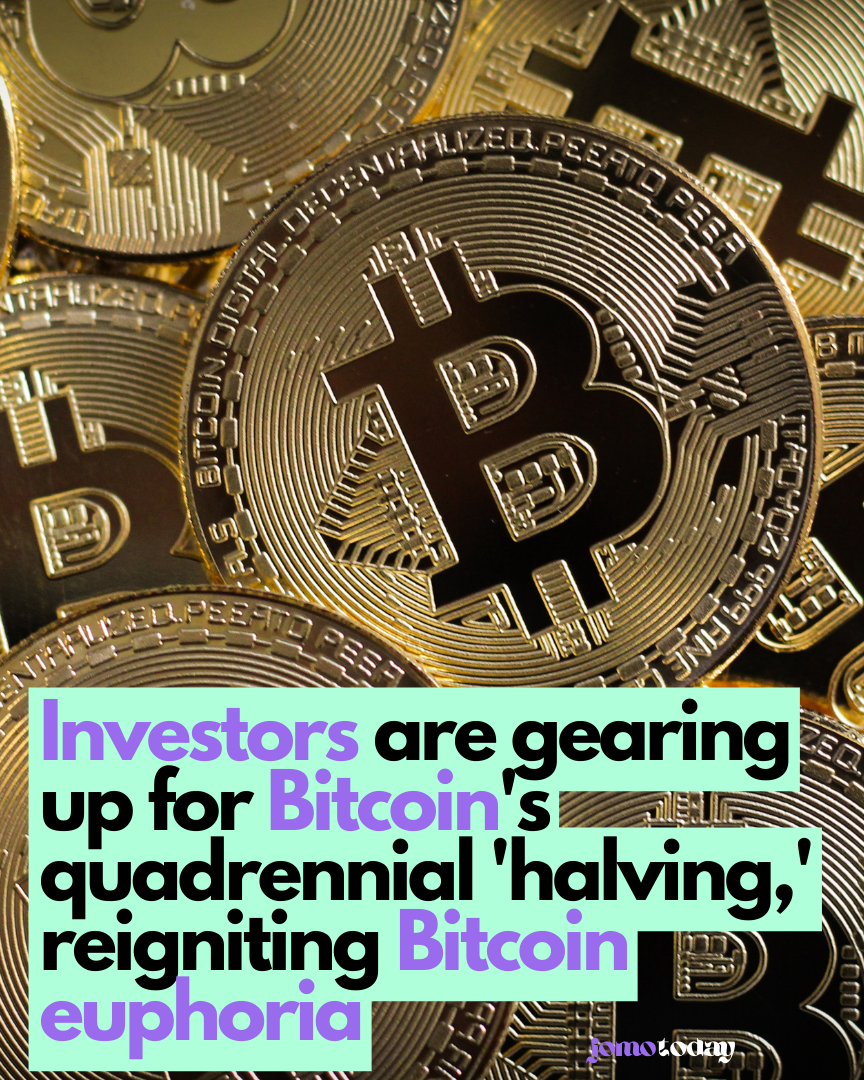On Monday, Bitcoin surged to $50,000 for the first time in two years, driven by a surge of enthusiasm from new investors and increasing anticipation surrounding an enigmatic event referred to as “the halving.”

Following seven consecutive days of gains, Bitcoin experienced a slight retreat back into the high 40s on Tuesday, still a considerable distance from its peak of approximately $69,000. Nonetheless, Bitcoin has undergone an impressive resurgence over the past eighteen months, soaring over 200% from its low of $16,000 in 2022.
Several significant factors contribute to the current fervor surrounding Bitcoin, including a influx of funds from investors in newly introduced Bitcoin exchange-traded funds and excitement surrounding the halving event, which reduces the rate of Bitcoin production.
Antoni Trenchev, co-founder of crypto lender Nexo Capital, anticipates that surpassing $50,000 marks the beginning, with $69,000 and $100,000 seeming attainable in 2024. The narrative is shifting from ETFs to the forthcoming halving, igniting excitement. Trenchev suggests that if historical patterns repeat, the next 12-18 months will be highly dynamic for the cryptocurrency market.
The halving, often referred to as the “halvening,” stands as a fundamental principle in the philosophy of Bitcoin.
In essence, the halving is a feature ingrained in Bitcoin’s framework that automatically diminishes the rate at which new coins are introduced into circulation. It occurs approximately every four years and is believed, in theory, to drive the price of Bitcoin upwards.
Understanding its mechanics requires grasping the core concept of Bitcoin as a decentralized asset. This means its value isn’t dictated by a central authority but rather by a sprawling peer-to-peer network of powerful computers engaged in verifying all Bitcoin transactions through a resource-intensive process known as mining.
Those operating the networked computers receive rewards for their efforts in the form of bitcoins.
However, every four years, the number of bitcoins awarded to a miner (or validator) is halved.
Several reasons contribute to this mechanism.
Bitcoin is intentionally designed to be a finite resource; only 21 million coins will ever be in circulation. This scarcity is viewed as pivotal to its value proposition by proponents, although detractors argue that such contrived scarcity doesn’t inherently create tangible underlying value.
Reducing the reward by half every few years serves as a mechanism to mitigate inflation while maintaining incentives for miners. The premise suggests that as inflation diminishes and Bitcoin becomes scarcer, its price is expected to rise.
Gareth Rhodes, former deputy superintendent at the New York State Department of Financial Services and current managing director at research and advisory firm Pacific Street, noted that “Every halving has historically resulted in some form of bullish price action.” This anticipation aligns with the idea that as demand constraints increase, prices tend to rise.
In 2020, the reward halved from 12.5 bitcoin to 6.25. This year, likely in April, it is anticipated to halve again, decreasing from 6.25 to 3.125 bitcoins.
Investors stand to benefit greatly, provided they possess the fortitude to weather the short-term fluctuations inherent in the cryptocurrency market.
According to Rhodes, in the two years preceding and following bitcoin’s initial halving in 2012, there was approximately a 30,000% surge in price. In 2016, the increase was nearly 800% over the same period, and for the 2020 halving, investors witnessed a 700% uptick.
The forthcoming bitcoin halving is poised to initiate a strategic game in the markets, as noted by Henry Robinson, co-founder of Decimal Digital Currency, in an email. “Sentiments lean bullish, especially in the long term, but the anticipation surrounding such a significant event can lead to considerable volatility.”
Robinson added that we might witness enthusiastic bullish activity, significant sell-offs, or a combination of both, before and after the halving event as market participants adjust their halving-related investments.
The timing of this year’s halving holds particular importance, occurring shortly after the US Securities and Exchange Commission greenlit the first spot bitcoin ETFs. Since January 11, nine of these funds have collectively amassed approximately $2.8 billion in total net inflows, with BlackRock and Fidelity leading the pack, as reported by Bloomberg.
Trenchev summarized the past month in crypto as a microcosm of the market’s volatility. Those who purchased Bitcoin ETFs at the recent low of $38,500 now enjoy a 30% increase, while those who entered at $49,000 on January 11th faced a 20% downturn and a challenging initiation into the world of crypto. He concluded, “Welcome to crypto; it’s not for the faint-hearted.”
Read More: Bitcoin, Ether Slip as UK core CPI Reaches maximum given that 1992
Disclaimer:
This content is AI-generated using IFTTT AI Content Creator. While we strive for accuracy, it’s a tool for rapid updates. We’re committed to filtering information, not reproducing or endorsing misinformation. – Jomotoday for more information visit privacy policy






Leave a Comment